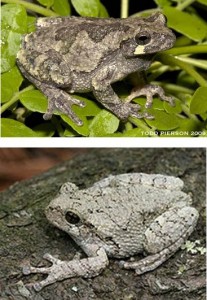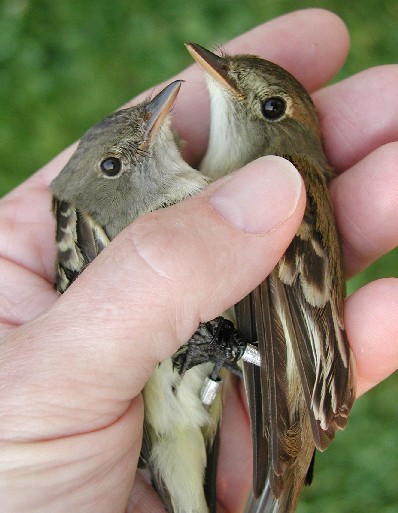As described in the 25 September post, differences in the courtship sounds that males use to attract females are often the best evidence that two groups of animals are different species. Pairs of physically very similar animals that are regarded as distinct species are called “sibling species.” Upon closer study, scientists can usually find structural differences between members of a sibling species pair, and there are often subtle differences in habitat preferences or geographic range. Two pairs of sibling species are shown below.
The first pair is the alder and willow flycatcher, two song birds commonly found in the eastern US. Even in the hand they are difficult to distinguish, but their songs are distinct!
Click on each name to listen to the song of each species on the Borror Lab’s website. Click on the play button in the gray bar to listen to the sound and to see a scrolling “voice print” or sound spectrogram of the song.

Gray tree frog (top) and Cope’s gray tree frog (bottom). Photos: Courtesy of Wikipedia and Encyclopedia of Life
The second pair contains the gray tree frog and Cope’s gray tree frog. In addition to the difference in their calls, these species differ in the number of chromosomes (the gray tree frog is a tetraploid, or has twice the usual diploid number of chromosomes).
These are just a few examples of the sounds in the Borror Lab’s collection. Feel free to browse the archive!
About the Author: Dr. Doug Nelson is Director of the Borror Laboratory of Bioacoustics.
